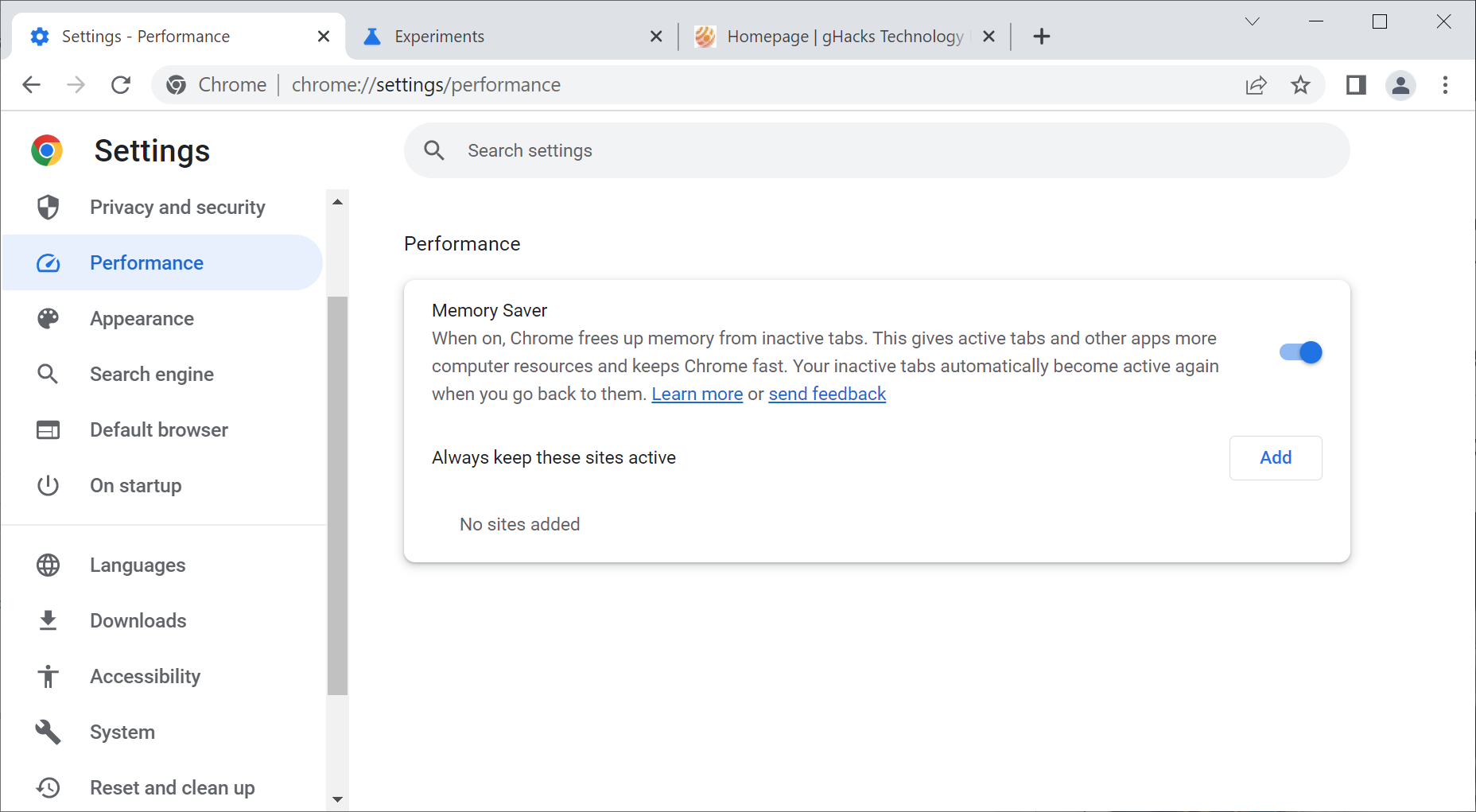Google is rolling out a new performance feature in its Chrome web browser that is called Memory Saver. The feature is designed to reduce the browser's memory usage by freeing up memory from tabs that are not active.

Memory Saver is rolled out to all Chrome Stable devices over the course of weeks. There is a way, however, to enable it immediately in the browser to start using it right away.
The best option to find out if Memory Saver is already available in Chrome is to load the main Settings page of the browser. Just type or paste chrome://settings/ into the browser's address bar and hit the Enter-key to load the Settings. Check if a Performance section is listed in the sidebar on the left.
If it is, Memory Saver is already available. If it is not, load chrome://flags/#high-efficiency-mode-available in the browser's address bar and set the preference to Enabled. A restart is required and the Performance section should now be visible in Settings.
There, Chrome users find two options. The first toggles Memory Saver in Chrome. Set it to on, so that it shines in blue, and Chrome will free up memory from tabs that were not used for a specific period of time. The tabs remain open and activating them restores them to full power in the browser. Ideally, this should not take longer than a regular tab switch in the browser. In reality, users may see a slight delay when they load a memory saver tab. Google notes that the feature is designed to keep active tabs, especially video and gaming tabs, run smoothly in the browser.
The second option available gives users the option to add a website to the exclusion list. Add sites there that you want active all the time. Some functionality, including notifications, may not work properly if the site is in memory saver mode.
Google is not the only browser maker that is adding memory and performance saving features to their browsers. Microsoft Edge's Sleeping Tabs feature, for example, has put billions of tabs to sleep already, according to the company. Introduced in Microsoft Edge 89, Sleeping Tabs is one of Edge's features to save resources. Microsoft claims that it frees an average of 39.1 megabytes of RAM per tab that is put to sleep.
It offers better controls than Chrome, as users may specify the amount of inactivity before a tab is put to sleep and enable a visual feature that distinguishes sleeping tabs from active ones. Chrome users may set different inactivity periods, but only in the experimental section of the browser.
Mozilla introduced a similar feature in Firefox in 2021. Called Tab Unloading, its main purpose is to reduce the number of crashes in Firefox due to low-memory situations.
Now You: do you enable memory saving features in your browser, if available?



3175x175(CURRENT).thumb.jpg.b05acc060982b36f5891ba728e6d953c.jpg)
Recommended Comments
There are no comments to display.
Join the conversation
You can post now and register later. If you have an account, sign in now to post with your account.
Note: Your post will require moderator approval before it will be visible.